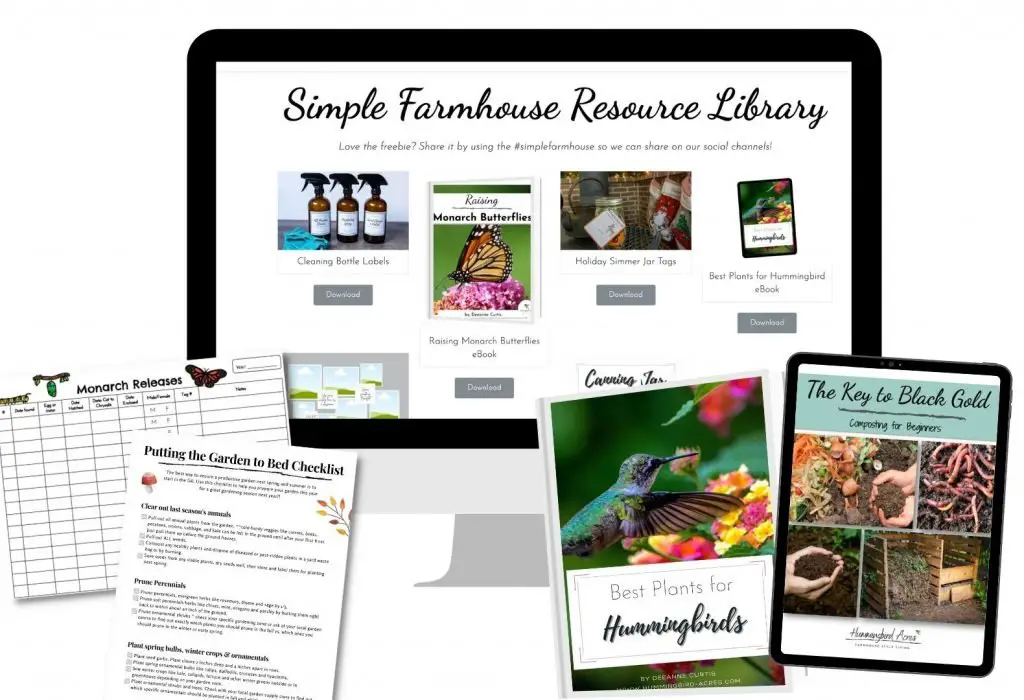How to Grow Lavender – Plus Caring for & Harvesting
Are you growing lavender in your garden? If you aren’t you should be, it is fairly easy to grow and loved by pollinators. And as we know the more pollinators we have the bigger harvest we will get. So today we are going to talk all about How to Grow Lavender, Plus Caring for and Harvesting Lavender.
We were given several lavender plants last fall and can’t wait to add them to our garden. Our plan is to plant them in containers and harvest them twice a year so that we can make dryer bags with lavender and lavender wreaths to sell in our market.
Growing lavender can be fairly fuss-free in the right climate and conditions. In general, lavender can grow as a perennial in USDA zones 5 through 10.
Growing Lavender is fairly easy if you are starting from a seedling. Starting lavender from seed is harder but can be done. We purchase our lavender as seedlings and plant in our garden. Lavender grows best in full sun and doesn’t require much water.
You will want to plant your lavender seedlings in soil that drains well, a heavy sand and compost mix works best. Add your lavender plant and fill the hole with soil within a couple of inches of the top. Push down the soil to remove air pockets. Your Lavender’s crown should stick up about one inch above the oil.
Water lavender regularly until it becomes established then water when the soil becomes dry to an inch deep. However, it grows bigger and is more floriferous with regular watering, specifically when planted in containers. Water when the soil is dry and then drench so that water flows freely.
Feed weekly with a liquid fertilizer to encourage more prolific flowering and improved flower color.
Let’s dive into some more details about growing lavender. And then we will chat all about how to care for it, how to harvest it and some ways that you can use dried lavender around your home.
Disclosure: Some of the links below are affiliate links, meaning, at no additional cost to you, I will earn a commission if you click through and make a purchase.
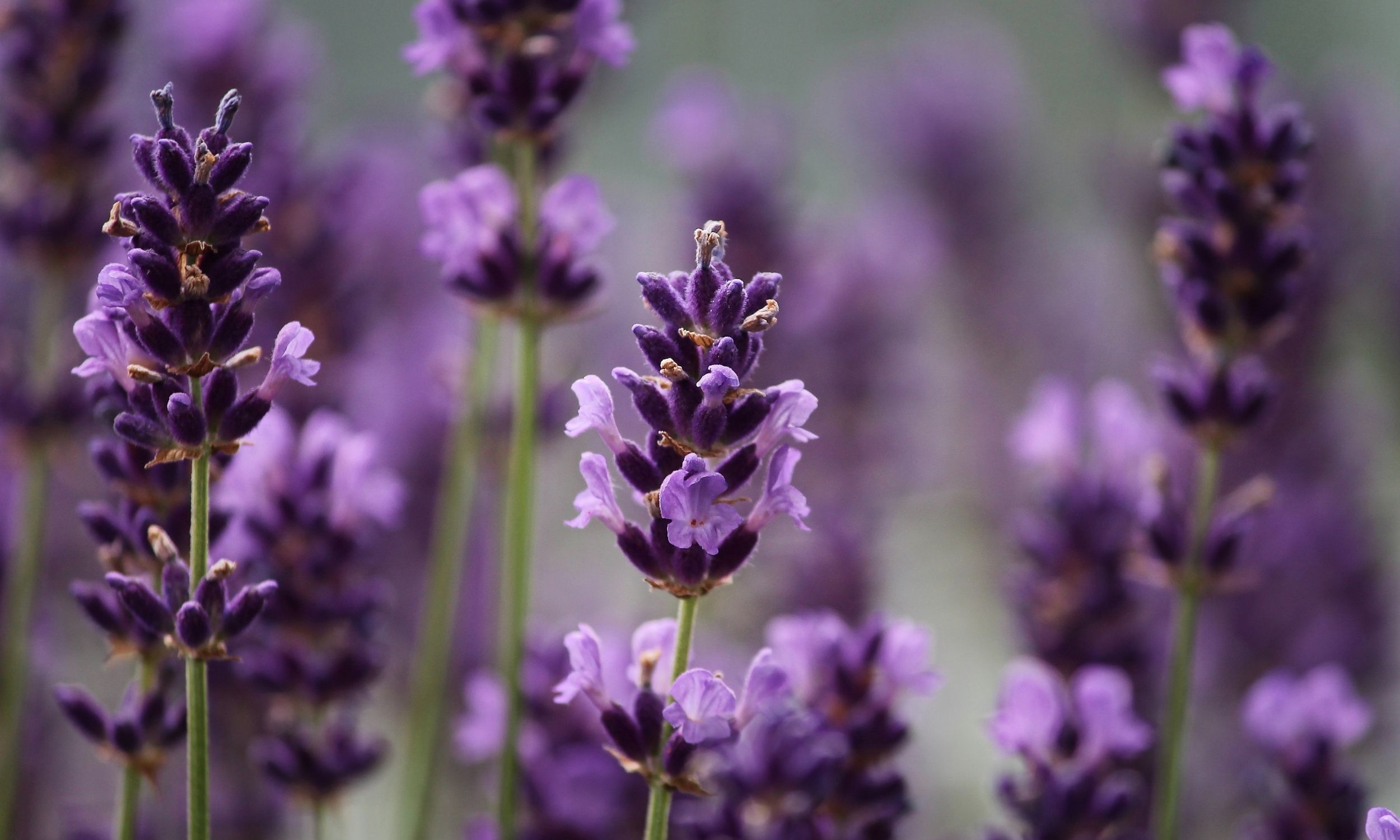
How to Grow Lavender
Best location: Lavender grows best in full sun; it does not mind a hot sunny location.
Soil preparation: Plant lavender in well-drained soil. Clay soils or soil too rich in organic matter will produce foliage growth rather than blooms. Lavender prefers a soil pH of 6.7 to 7.1. Lavender will grow in dry, light, gravelly soil.
Seed starting indoors: Start lavender indoors 4 weeks before the last frost in spring. Refrigerate seed for 4 to 6 weeks before sowing. Sow seed in flats in full sun or under fluorescent lights. Seeds will germinate in 14 to 21 days.
Transplanting to the garden: Transplant lavender outdoors in mid to late spring.
Outdoor planting time: Sow lavender seed outdoors in late spring after the last frost or in fall. Fall planted seed will germinate the following spring.
Planting depth: Sow seed ½ inch deep.
Spacing: Space lavender plants 24 to 36 inches apart.
How much to plant: Grow 2 lavender plants for kitchen and cooking; grow 6 to 12 plants for tea and preserving.
Companion planting: Plant lavender with echinacea, winter savory, germander, hyssop, yarrow, and boxwood. Lavender flowers attract nectar-seeking insects, including beneficial insects, to the garden.
Is Lavender an Easy Plant to Grow?
Growing lavender can be fairly fuss-free in the right climate and conditions. In general, lavender can grow as a perennial in USDA zones 5 through 10. Lavender thrives in warm, sunny, arid Mediterranean climates, and it doesn’t do well in high humidity or wet conditions.
One way to counter frequent rains and dampness is to grow lavender in a container or pot. Use a well-draining potting soil mixed with sand, or even a cactus potting mix. Make sure to avoid overwatering it. Excessive moisture and overwatering is the most common cause of death in lavender. Soggy roots will quickly lead to fungal disease and demise. When planting lavender directly in the ground, choose a sunny location with excellent drainage and sandy soil. Lavender doesn’t need a lot of compost, fertilizer, or overly rich soil. In fact, it is happiest in poor rocky soil.
Lavender is slow and finicky to start from seed, though possible. The quick-and-easiest way to grow lavender is to start with an established seedling or nursery plant. Truthfully, that is what we’ve always done! Young plants can also be slow growers at first, so be patient with them. By year two or three, the roots become established and they’ll grow and bloom more vigorously.
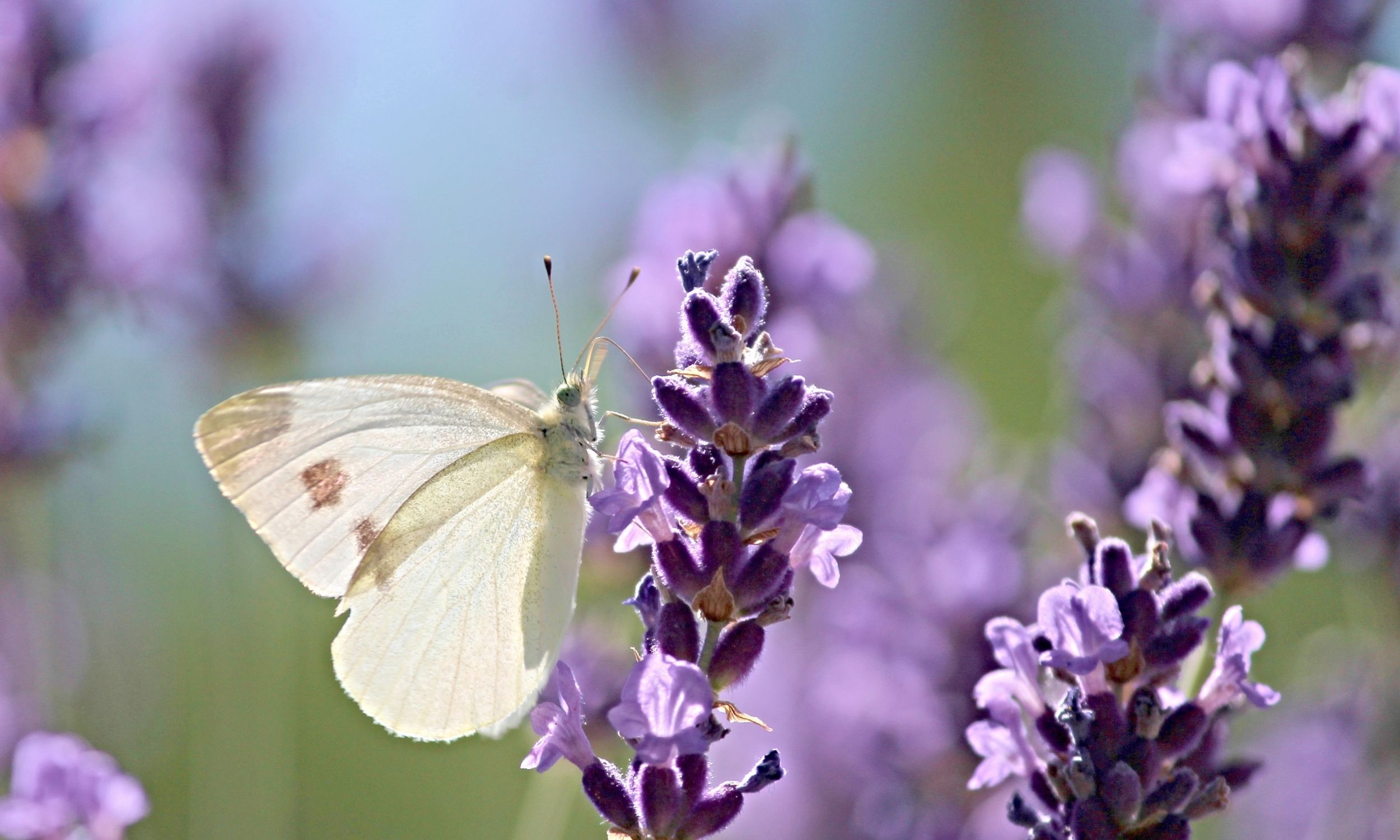
Lavender Plant Care
Watering: Water lavender regularly until it becomes established then water when the soil becomes dry to an inch deep. Do not overwater.
Feeding: Side-dress plants with compost tea every two months. Feed lavender a slow-release organic fertilizer each spring as growth starts.
Mulching: Place a light mulch of aged compost around lavender in hot summer regions.
Care: Removing spent blooms will spur new blooms. Trim back foliage after blooming to shape the plant. Prune plants back by half in spring; remove dead wood and shape the plant. If you prune old wood, it will not regrow. Plants can weaken over 5 years or so and new ones can be started from cuttings in summer. Rejuvenate the soil with aged compost or aged manure before planting new plants.
Container growing: Choose a container at least 8 inches deep and wide; larger is better if you are growing lavender as a decorative perennial.
Winter growing: Protect plants in cold winter regions by heaping straw up around plants; remove the straw in spring. Indoors grow lavender in a bright window. Do not overwater lavender growing in pots.
Propagating Lavender
Seed: Lavender seeds do not always produce plants identical to the mother plant. Seeds can be sown indoors or outdoors in late spring. Seeds should be stratified for 1 to 2 weeks. Germination can sometimes be slow; cuttings may be a faster way to start new plants. Cuttings are a better way to grow an identical plant.
Cuttings: Lavender can be propagated by cuttings that are 3 to 4 inches long; strip away the lower leaves then dip the bare stem end in a rooting hormone and place in light potting soil; bottom heat will encourage rooting.
Can Lavender Grow in Pots?
Lavender is a very attractive perennial that enjoys a long flowering season and is fairly easy to grow in pots.
Planting Lavender in a Pot
Select a container that provides your Lavender enough room to grow. A 12-16 inch pot will be perfect. Make sure it has at least a ½ inch hole in the bottom for drainage. Add small stones for drainage.
Select a good sandy potting mix that easily drains water and fill the pot three quarters full. Add a tablespoon of lime.
Add your lavender plant and fill the pot with soil within a couple of inches of the top. Push down the soil to remove air pockets. Your Lavender’s crown should stick up about one inch above the soil.
Water thoroughly
Add 2 inches of mulch to help retain moisture.
Lavender requires at least six hours of sunshine per day. Shade reduces growth and fragrance. Place your container in a sunny location that is sheltered from the wind.
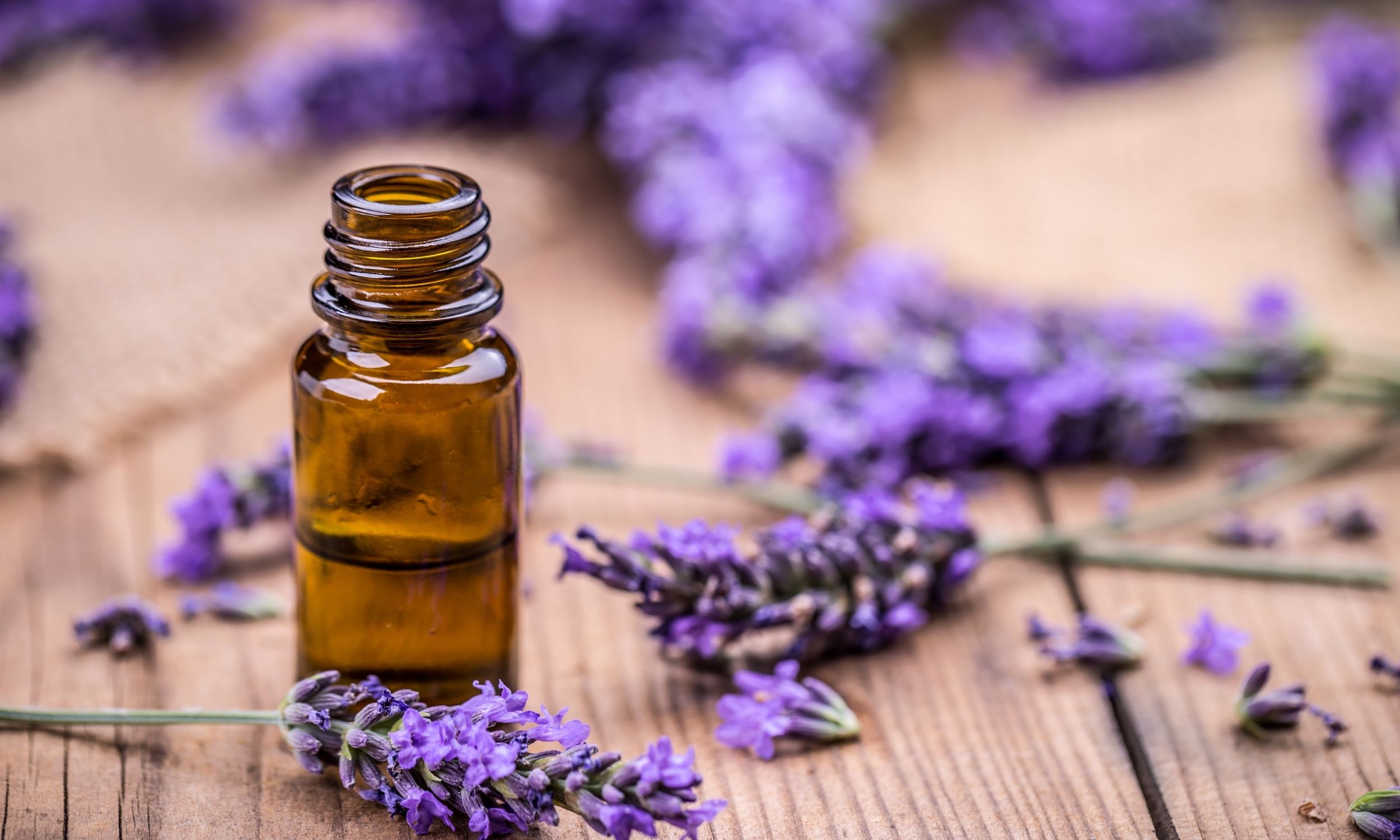
Caring for Potted Lavender
Once established, lavender is fairly drought-tolerant. However, it grows bigger and is more floriferous with regular watering, specifically when planted in containers. Water when the soil is dry and then drench so that water flows freely out the bottom of the pot.
Feed weekly with a liquid fertilizer to encourage more prolific flowering and improved flower color.
Overwintering: If you live in a climate where the winters are harsh, store your potted lavender in a garage or indoors during the winter to protect them. The plants need very little water from November to February. Wait until the pot is noticeably lighter or even until plants start to wilt and then water only on top of the compost. Do not fertilize in the period of dormancy.
Pruning Potted Lavender
Pruning your lavender will prevent your shrub from turing to wood. This si important because the parts of the pant that turn to wood will not produce new lavender stalks. Pruning once a year is great. Pruning twice a year is better.
When pruning your Lavender, never cut into the woody part of your lavender. Always make sure to leave the leafless wood intact, since cutting it could injure the plant. A good rule is to prune two leaf sets above the woody part. This will encourage stable growth and a healthier, thicker lavender plant.
Always use a very clean set of pruning shears (these are our favorite from Amazon) that have been washed clean of dirt and disinfected with a bleach solution. Taking this precaution will help ensure that your Lavender plant doesn’t pick up a bacterial disease. You should also make sure the shears are very sharp, so that they make a clean cut that will heal over quickly.
While pruning in spring can delay flowering, it is a good time to trim away dead or damaged parts. Prune your Lavender plants just as the new growth begins, cutting back as to leave some new shoots at the base of each branch.
In late summer or early fall, after the last flush has faded, prune your Lavender stems down to an inch above the wood. This will provide better air circulation.
How to harvest lavender so it keeps growing?
When to harvest: Harvest lavender flowers as they begin to open. Harvest flowers for drying before midday; that’s when the oils are most concentrated.
How to harvest: Snip flowers and stems with a garden pruner. Remove flower stalks after they have faded if you have not taken them sooner.
Preserving and Storing Lavender
Drying: Dry flowers in a dark, airy place on a screen or by hanging bunches of stems upside down. Dried flowers will remain aromatic for a long time.
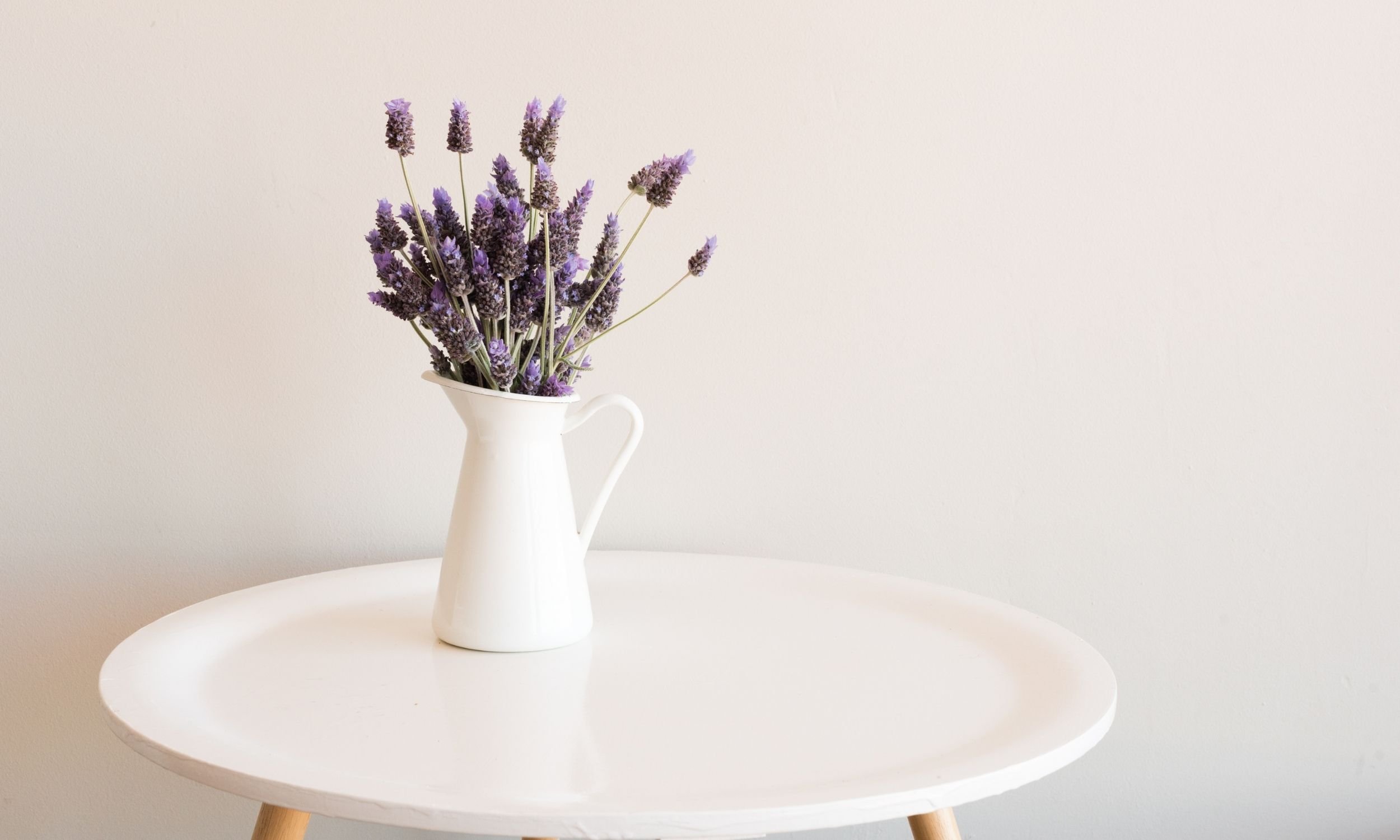
Lavender Varieties to Grow
English lavender (L. angustifolia) Grows to 36 inches tall and wide; narrow gray leaves about 2 inches long with smooth margins; pinkish-purple flowers atop slender, leafless stems about 24 inches long. ‘Munstead’ is a dwarf to 18 inches tall with deep lavender-blue flowers. ‘Hidcote’ grow to 1 foot tall has purple flowers. ‘Jean Davis’ has pale pink flowers.
French lavender ( L. dentate) grows to 3 feet high and has bright green leaves with square toothed edges. Flowers are lavender-purple on short blunt clusters, each topped with a tuft of petal-like bracts; long-blooming.
Spanish lavender ( L, stoechas) grows 18 to 36 inches tall, has short and narrow gray leaves. Flowers are dark purled growing in short flower spikes topped with a tuft of large purple petal-like bracts; blooms in early summer. A cultivar of Spanish lavender is ‘Otto Quast’ which has showy purple bracts.
Hybrid lavenders (L. x intermedia) are crosses between English lavenders and Spike lavender ( L. latifolia)—which is a large English lavender. Hybrids include ‘Provence’ which is highly aromatic with pinkish lavender blossoms and ‘Grosso’ which is a compact plant with deep purple flowers.
How to use Dried Lavender
In case you are wondering what to do with your bounty of fresh herbs, check out these DIY projects and recipes featuring lavender.
Lavender Infused Sugar Recipe
Lavender Wreath
Dryer Bags with Lavender
Insect Bite Be Gone – Roller Ball
Join the Simple Farmhouse Resource Library
Labels | Recipes | Guides | And MORE!!!
